Credit: Caleb Anderson



![]()
Reference photo of the VQ35DE Engine Firing Order for the Infiniti. Very helpful when it comes to diagnosing P030x CEL Codes.
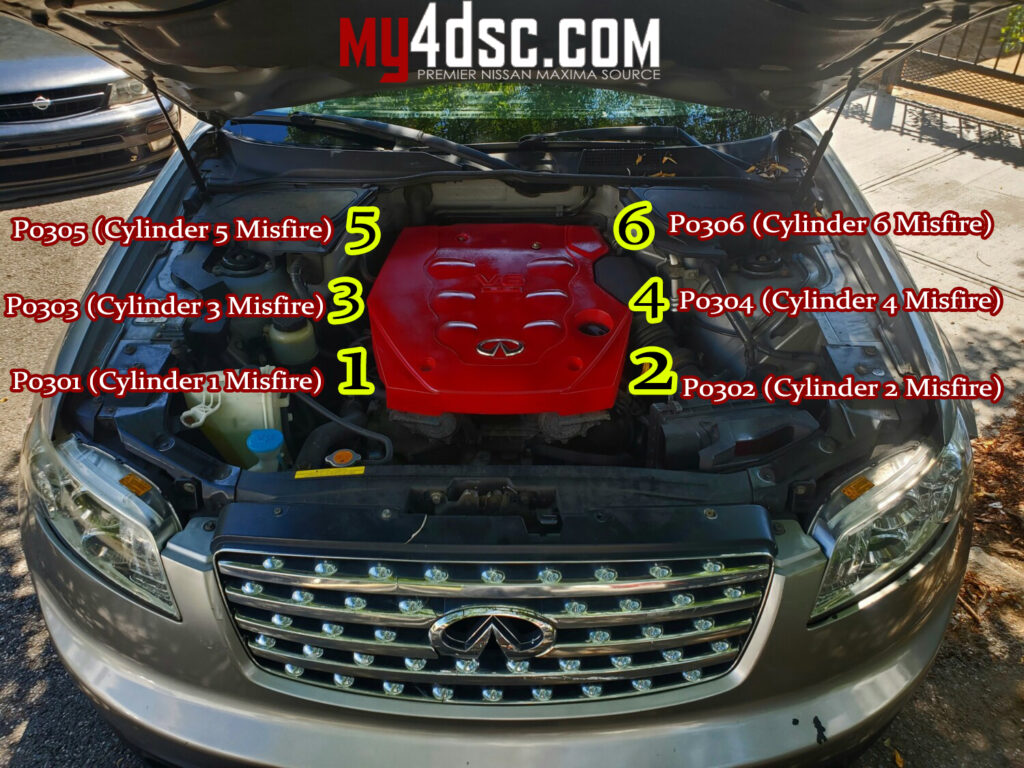

If you have a CEL for random misfire, below the common codes.

![]()
Reference photo of the VQ35DE Engine Firing Order for the Nissan Maxima. Very helpful when it comes to diagnosing P030x CEL Codes.
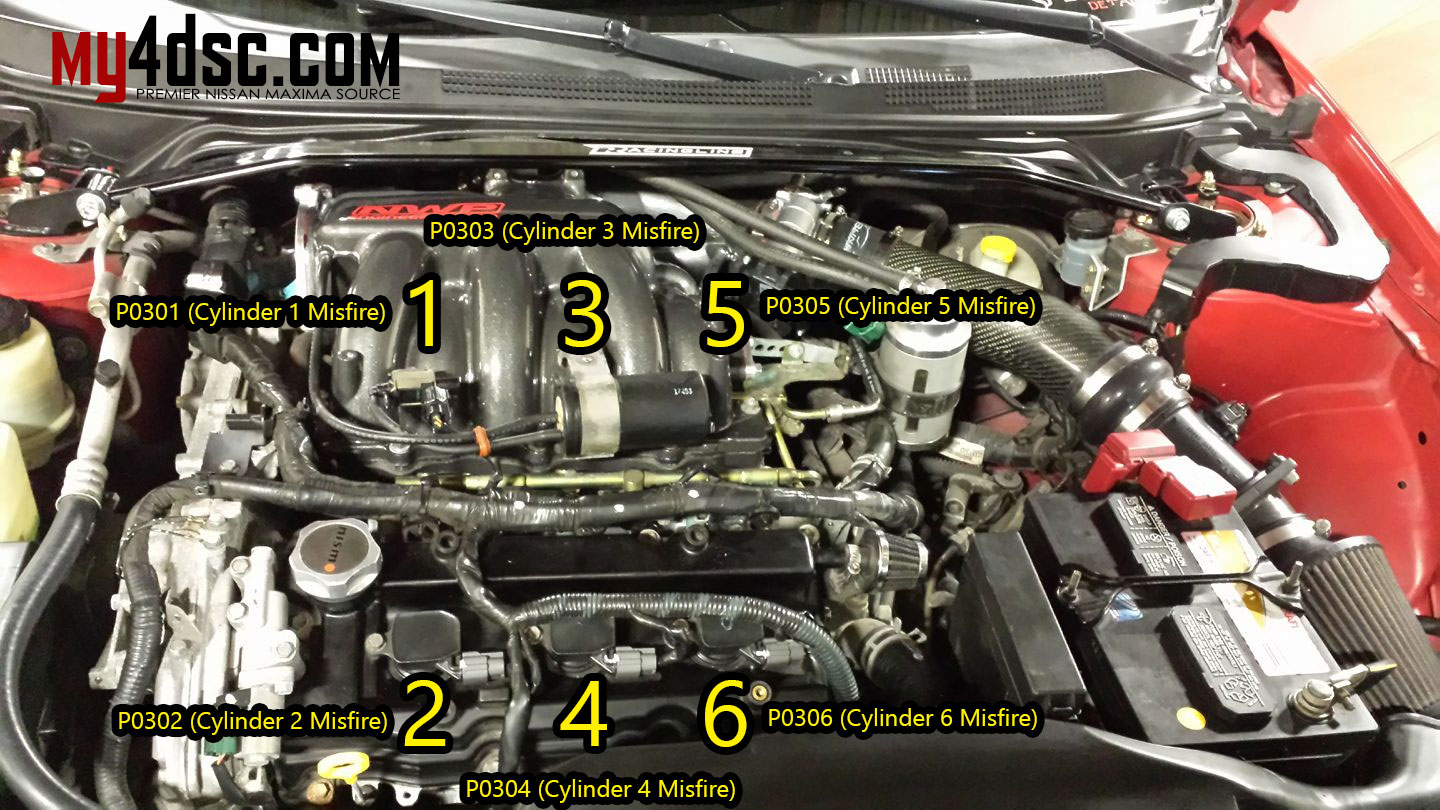
If you have a CEL for random misfire, below the common codes.
FSM Photo:

![]()
Community Member Credit: Eddy
This is just for reference and comparison. The RIPP Supercharged Kit usually comes with the V-5 G Supercharger. Most upgrade to the V-2 Si Supercharger Trim. You will need to ensure the impeller is also in the right rotation for your setup.

| Supercharger | Max Speed | Max Boost | Max Flow | Max Power | Inlet OD | Outlet OD |
| V-5 F | 52000 RPM | 14 PSI | 750 CFM | 550 HP | 3.5″ | 2.5″ |
| V-5 G | 52000 RPM | 15 PSI | 750 CFM | 550 HP | 3.5″ | 2.5″ |
| V-2 S | 50000 RPM | 20 PSI | 1000 CFM | 680 HP | 3.5″ | 2.75″ |
| V-2 SC | 53000 RPM | 20 PSI | 1000 CFM | 680 HP | 3.5″ | 2.75″ |
| V-2 Sci | 53000 RPM | 17 PSI | 1050 CFM | 725 HP | 3.5″ | 2.75″ |
| V-2 Si | 52000 RPM | 22 PSI | 1150 CFM | 775 HP | 3.5″ | 2.75″ |
Vortech 5-G



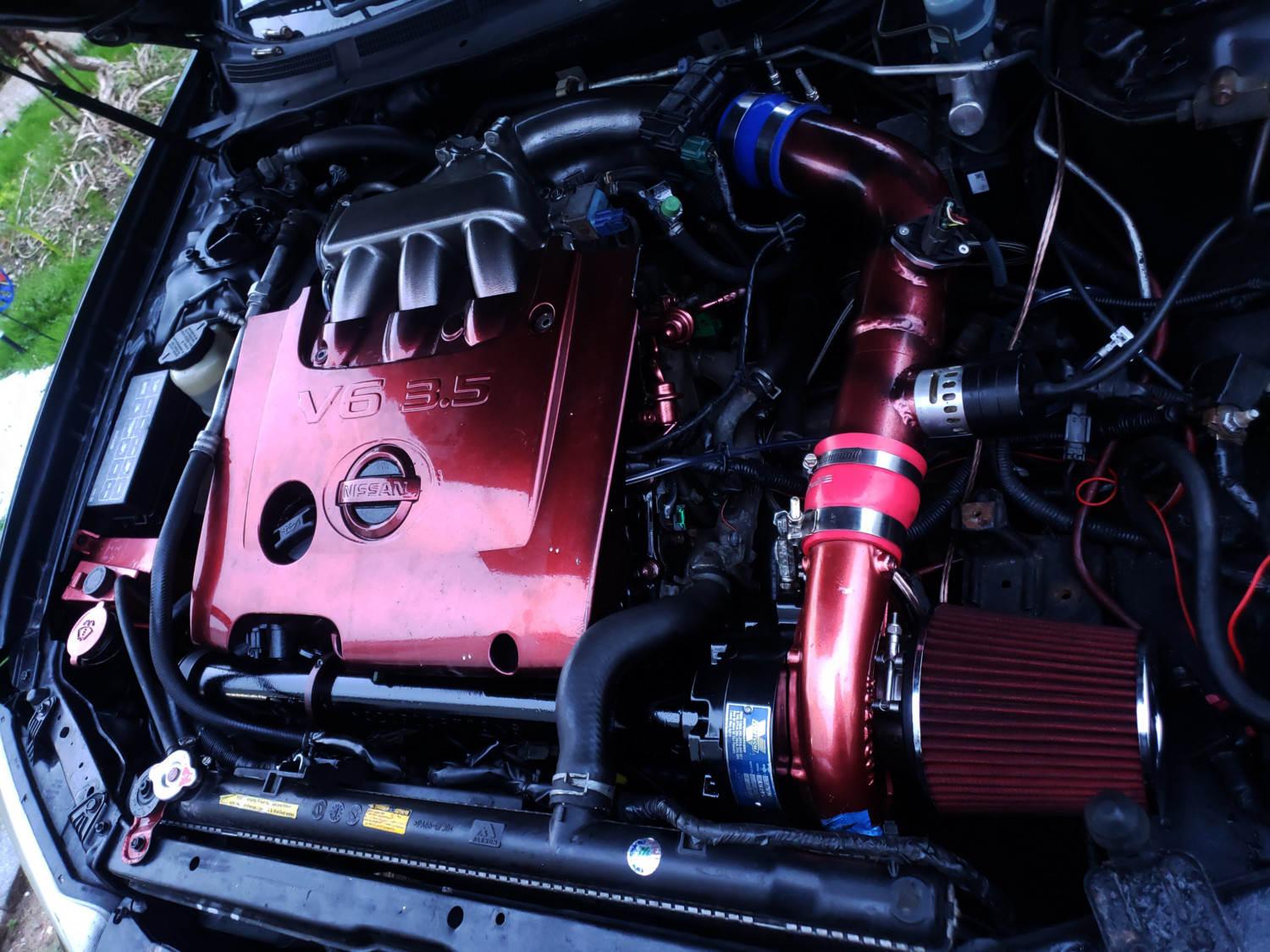
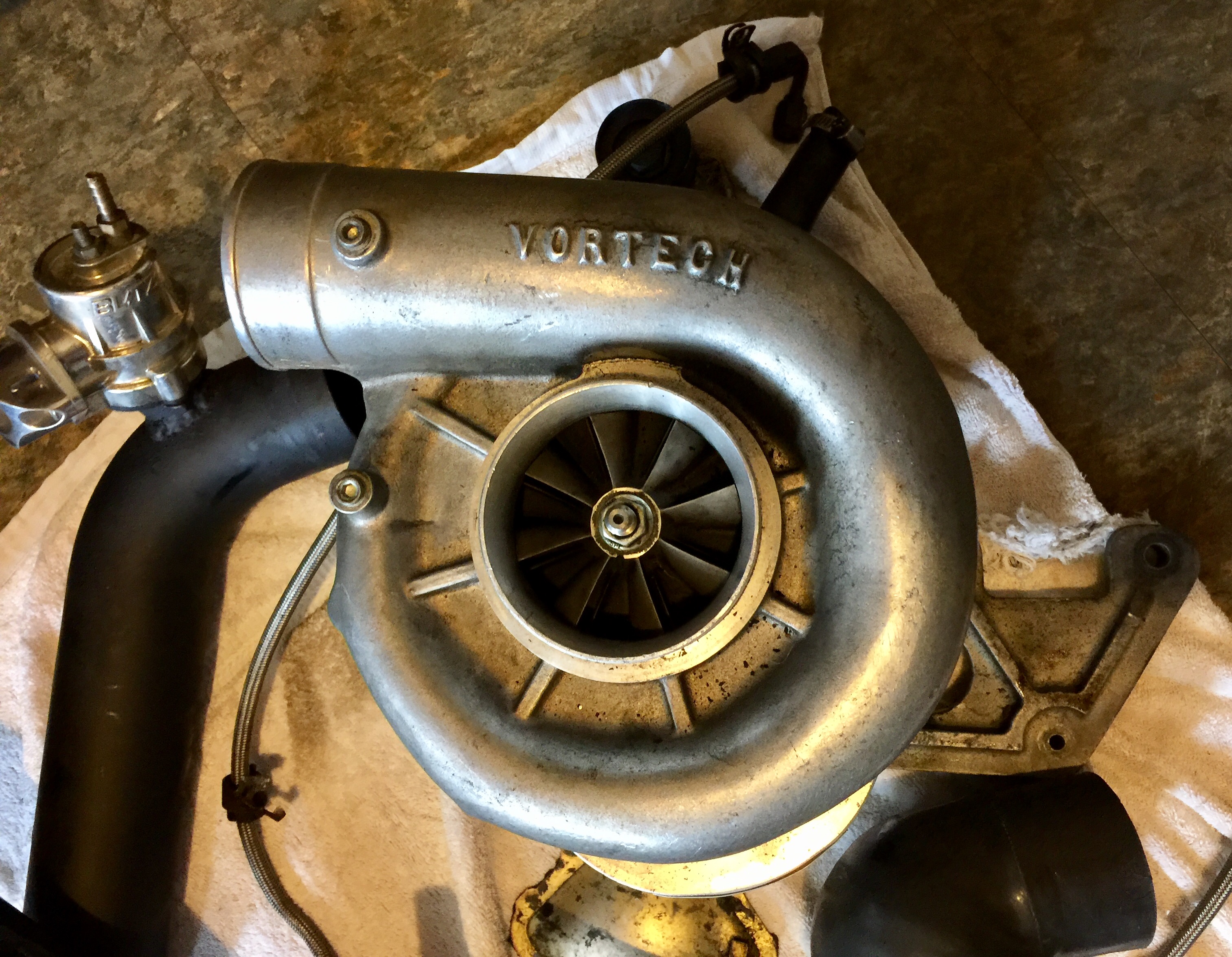

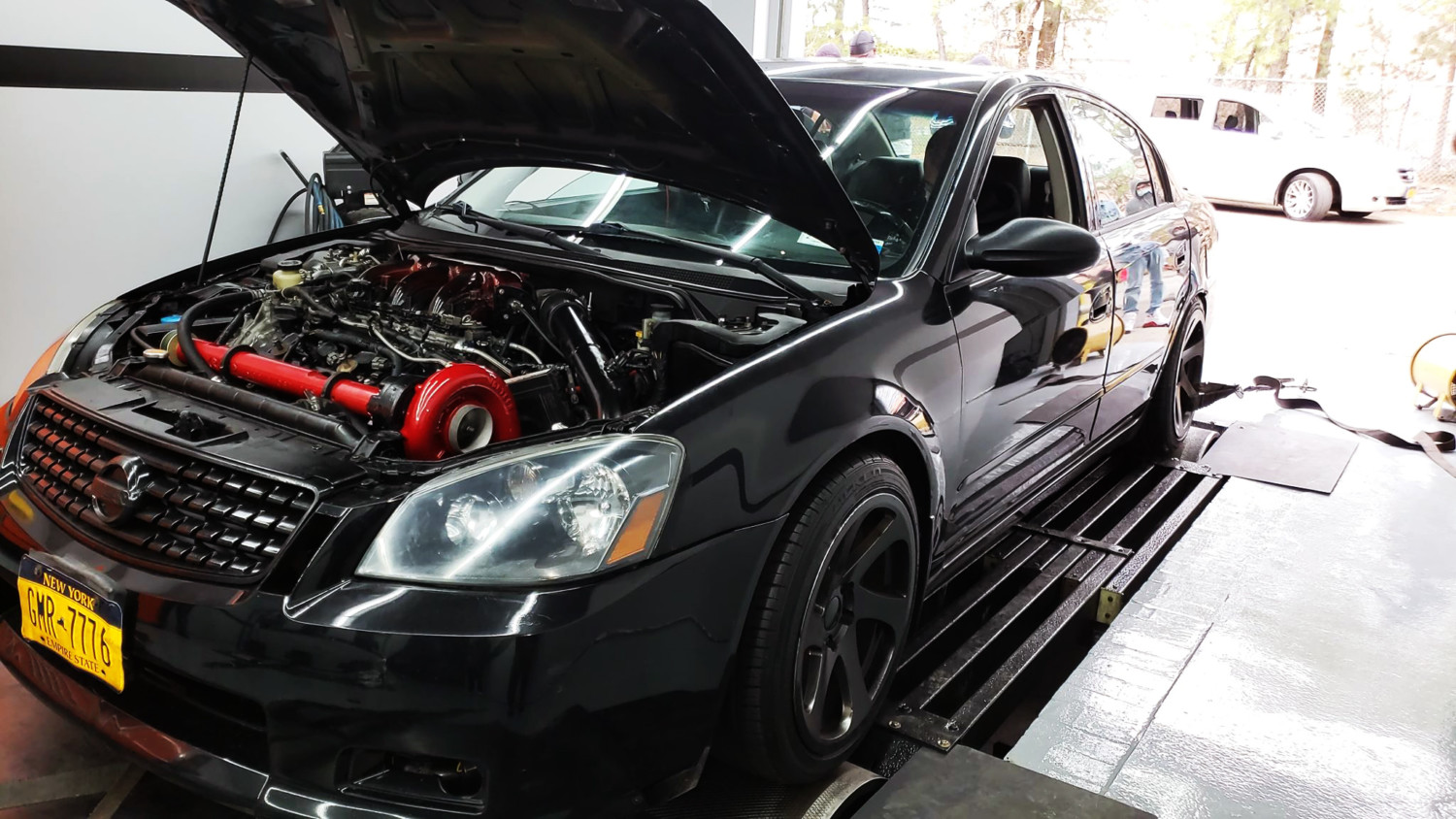
![]()
Community Member Credit: Eddy
Wanted to make this reference post for folks that have MAF (Mass Airflow) issues and want to get an cost effective OEM replacement. I have to give credit to TallTom who gave me the idea to try this out. There are various aftermarket options out there but are known to have issues. OEM is the best replacement brand for MAF sensors. The main problem with buying from Nissan is the OEM (Part # 22680-AM600) heft price which is usually around $400 bucks (yeap insane).
The good news is that you can buy an OEM brand for your 2002-2003 Maxima without the crazy price. Hitachi is the OEM supplier for many Nissan Parts. The part number you need is MAF0095. There is another listed as MAF0099 but its much higher in price so make sure to order the MAF0095. We’ve tried this on our own 2002 Nissan Maxima and it worked perfect with no issues. You will notice that it says “for Pathfinder” but this will work fine on your 2002-2003 Maxima.
Update 12/16/2020: Ordered this for my 5.5 Nissan Maxima. Works perfect and just as it would from the factory.

Another common option that I’ve noticed is that people buy a 2k1 MAF which is cheaper and then do the thermistor/IAT swap. The 2k1 MAF is around $80 bucks and require the swap as mentioned. With the above you don’t need to do anything as it is direct plug-n-play. However, if you still want to save a few bucks can check the 2k1 conversion to 2k2 MAF write-up here:
The most ideal option is to swap to the 04+ Nissan Maxima MAF which uses the newer style slot. This is recommended for those who are going to do performance build and will get tuned. You can read more details on it here. Just keep in mind that this option requires proper tuning for optimal use.
Amazon ($109.97): Hitachi MAF0095 Mass Air Flow Sensor: Automotive Amazon.com: Hitachi MAF0095 Mass Air Flow Sensor: Automotive
eBay ($98.76): https://www.ebay.com/itm/353263419383








![]()
Community Member Credit: Aaron92SE
First off, I just want to say that I got this idea from Jime. He purchased a 300amp battery jump box and used the battery out of it for his car. It weighed 6 lbs. I believe he had problems with it starting. So he purchased a 400amp battery jump box with a 12lb battery and has been using that ever since without issues. Jime, please correct me if I say anything incorrect. Thanks.
So I found that Harbor Freight had the best deal on a Battery Jump Box. So I purchased a couple of them. One to keep in the trunk of my car and one to use the battery out of.
The jump box I used was a 650amp one found here (Item #40615):
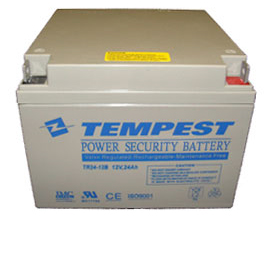
It’s the largest one they had. But before I ripped into this one, I looked at the manual and simply decided to order the replacement battery direct from Harbor Freight by calling their customer support at 1-800-444-3353. The battery cost $32.70. I order another battery for my HF drill, so that increased shipping costs to $7.99 instead of approximately $6.00 I think. The item number printed on my receipt for the battery is 26307. But you shouldn’t need that. Just give them the item number for the Jump Box and tell them you want the replacement battery.
The battery weighs 14lbs.
Here is what the battery looks like:

First I had to install “flag to post” adapters. I ordered them through my local Napa store (Part # NW 728219) for $6.29. They come in a pair and were cheaper than ordering them online from a battery supply store.
I had to slightly drill out the flag terminals on the battery with a step drill bit in order to use some spare M6 bolts I had laying around.
Next, I had to figure out a way to mount it in my 3rd gen. I really wanted to get rid of the battery tray as well for further weight reduction. But this posed several other problems. One being, the coolant tank attached to one of the battery tie down bolts. Plus, a couple relay boxes attach to the battery tray.
Out with the old battery. It weighed in at 40lbs and the tray is 3lbs.

I zip tied the coolant tank to the coolant tube on the VQ35. I know it’s ugly, but it’s ok. I’m only worried about performance here.

I put a fresh coat of paint on my OEM tie down. I found two bolt holes already in my frame that I was able to use. So I had these long M6 bolts laying around that I was able to use.

Here is what the battery looks like installed. I put some rubber bands on the bolts to prevent the bolts from ever dropping through the bolt holes. The bolt holes in my frame were threaded for M8 bolts and I didn’t have any M8 bolts that were long enough or I would have used those.
I was able to zip tie the relay boxes securely.
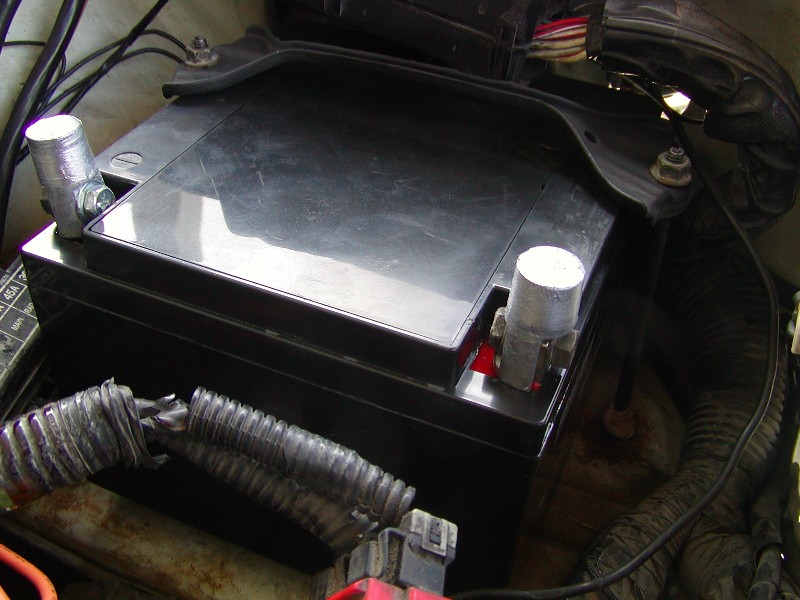


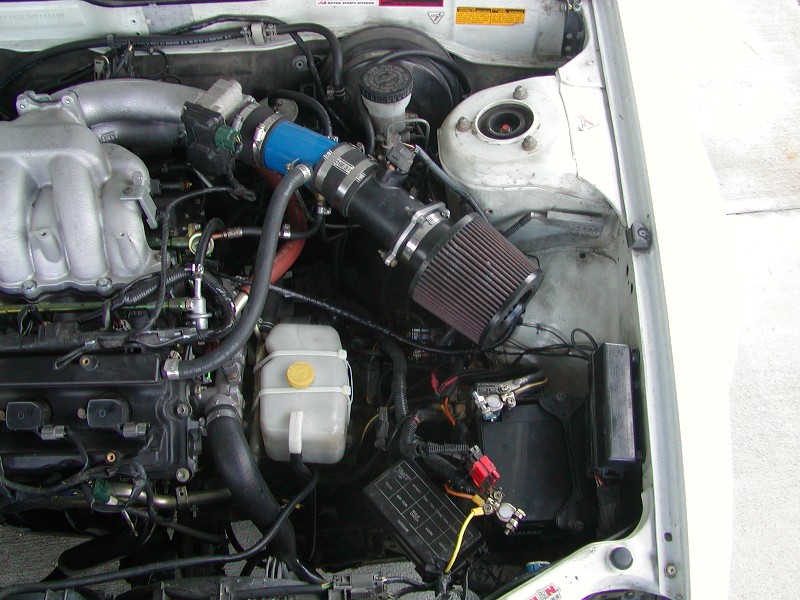
I installed a cheap Harbor Freight multimeter inside my car so I can always keep an eye on battery voltage. So far, this battery cranks my car up just fine. I have noticed that sometimes, the engine has to turn over one more time to get it to fire up. But this is not a concern. I believe this may be due to the engine turning over a tad slower than before. My old battery was the largest and highest CCA Duralast battery that Auto Zone had to offer. But it’s served it’s life as I bought it back in 2003.
Well that’s it. A weight reduction of 29lbs for under $40! I hope this helps somebody in the future. Thanks Jim for the idea!
I went to Advance Auto Parts today and bought a battery for $31.99. It has 230CCA and 275CA and weighs 15lbs. It works just fine in the summer. So I’m happy. I just had to make a new tie down since it sits higher than the jump box battery. Car starts with plenty of power.
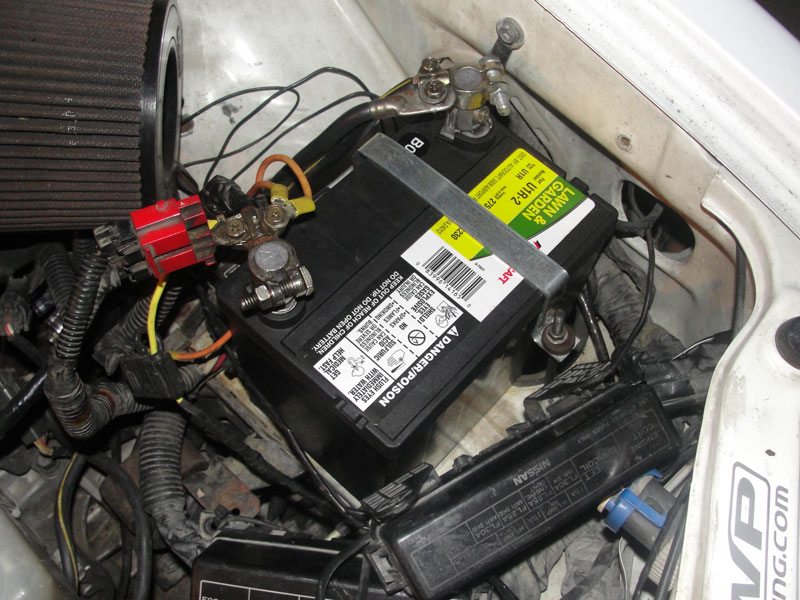
![]()
Community Member Credit: greghome
At one point on the Maxima message boards in late 1999 there was a lot of talk about increasing airflow through the Maxima intake by removing the screen from the Mass Airflow (MAF) Sensor. The screen is not a secondary filter as one might suspect. Its purpose is to “straighten” airflow going into the throttle body. The theory is that removing the screen will allow increased airflow and thus, more horsepower. Being a logically thinking person, the science behind the theory sounded good to me, and I am willing to give anything a try that sounds reasonable so…. I removed the screen from the MAF sensor (this process is irreversible!!) and ran with this mod for almost a full year. While I did not notice any harmful effects from removing the screen, I can say for certain that this mod does not increase horsepower in the slightest, and might possibly even screw up the MAF readings. Read on.
For comparison purposes, here are two Mass Airflow Sensors from a 4th-Generation Maxima. The one on the right has had the screen removed for (presumably) higher airflow. The one on the left has the screen intact.

The way the MAF sensor works is that it measures the airflow through a very small opening in the center of the sensor and sends a variable voltage out its electrical connector to the ECU. The ECU is programmed with the diameter of the sensor and computes the total airflow into the throttle body based on the flow through the center section. The reason for the screen is to ensure that the airflow going into the center portion of the sensor is straight and smooth so that the ECU’s computation will be accurate. If the flow is not smooth then the ECU computation of total flow through the barrel will be off. In my opinion, removing the screen will quite possibly allow a more turbulent airflow through the MAF sensor than without the screen.

In spite of my theories as to why the screen is there and what (I believe) could happen if it is removed, I still noticed no detrimental effects from removing the screen. However, since there was also no tangible benefit from this mod I chose to re-purchase a new MAF sensor and re-install it with the screen in place.

![]()
Community Member Credit: Nick
What a relief, after weeks of dealing with stalling max, she purrs like a kitten again. The fix took 10 min, by simply running extra grounding wire from MAF to the chassis. All stalling when coming to stop , shaking at idle, stalling in reverse and running rich is now gone !!!
If you experience stalling issues (with no CEL) and have tried all the basic troubleshooting like: clean TB, IACV, ECTS, plugs, filters, coils etc and nothing seemed to help, you need to check your MAF sensor ground.
Simply back probe the black wire on MAF connector with positive lead of the voltmeter and negative lead pressed to one of the ground connections on the engine block.
The voltage at idle should be less than 9mv (0.009v), if it is above the value the sensor should be re-grounded.
Once the sensor is re-grounded , the voltage should drop significantly. Mine was around 0.277 at idle and 0.187 with ignition on ( engine not running). After the fix, the voltage dropped to 0.005 at idle and 0.002 with ignition ON.
I’m glad that i was able to fix without having to take the car the mechanic/dealer.
I would still like to know what has caused my MAF sensor ground go out of specs, The sensor itself has passed the output voltage test listed in Haynes manual.
Also the manual says that the MAF can develop voltage signal problems that can’t be seen on the voltmeter, the PCM can see such signal faults and drive-ability problems will result.
In cliff notes, if you Max stalls when coming to stop, check the ground to MAF it should be less than 0.009mv
Nick.
![]()